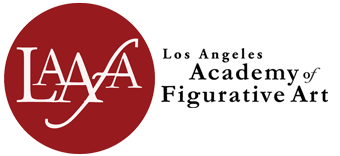In this class, there will be a wide range of drawing and painting methods demonstrated using graphite. Students may work along during the class, and gain insight on tools, materials, applications, and various techniques and mark-making, as well as development of form-driven images, textures, layering and effects. There will be a variety of tools demonstrated using dry and wet graphite on various paper and panel surfaces. Subjects may include: abstract forms and imagery, figure and portrait, nature, environment, backgrounds. Other topics that will be discussed in this class are: composition and storytelling, personal voice and vision, observation and perception, inspiration, ideation, flow, and the artist’s intentions as it applies to graphite drawing and painting.
A virtual room link will be sent to you up to 24 hours prior to your class start date.
Complimentary 10-day access to each recorded session. Recordings are emailed the day after each live session.
I will be demonstrating and discussing many different uses of graphite. The following is a list of the many of the materials I may be using, but it’s not necessary to have all or purchase any of these for the workshop. If you already have some of these things but not all of them, I encourage you to use what you already have. I’ll be demonstrating and discussing graphite techniques in both wet and dry uses.
Here is a list of the various materials I may be using:
Graphite in the form of pencils, sticks, mechanical pencils, powder, and water-soluble tube and cake
Acrylic paint – Titanium white, I use Heavy Body paints for building up textures, and I use regular viscosity and fluid acrylics as well, which are also great for many things I’ll be doing with acrylic and combining its use with graphite. I also use Titanium Buff and/or Unbleached Titanium
There may also be a small segment of the class where I may show a little bit of combining limited color with graphite too. It’s not necessary to have many colors. What I may use most would be: Burnt Umber, Ultramarine Blue, Transparent Red Iron Oxide or Burnt Sienna, Transparent Yellow Iron Oxide.
Gesso
I’ll also use and discuss mediums such as:
Matte Medium and Gloss Medium/Varnish and some other mediums such as Soft Gel Matte
Erasers:
Kneaded eraser
Mechanical (click-out) erasers or battery-operated erasers
Eraser pencil with brush on one end (often called a perfection eraser pencil)
Brushes:
A handful of the following brushes would be helpful to have:
Various sizes and shapes of sables from small rounds to small/mid-sized flats, brights and filberts
Various small mops or soft sables if you don’t have mops (basically something puffy and soft)
A couple small/mid-sized bristles or utility bristle brushes.
Jar/cup for water and rinsing brushes.
Isopropyl alcohol
rags or paper towels
Other unconventional tools I may be using are:
silicone spatula (kitchen spatula), scraps of foam core, rubber stamps, sandpaper, straws,
misc. found objects, misc silicone tools such as paint shapers or combs or potters rib, palette knife,
double-sided silicone clay/paint shaper pen.
Surfaces:
You do not need all of these, but I may be demonstrating using any of the following: Sketchbooks or loose drawing or sketch paper, old books or book pages, mixed media paper or panels, watercolor paper, toned paper, yupo paper, Bristol paper or panels, claybord panels, illustration board, matte board.
If you do not have any of these materials, or if you might have limited opportunity to go out to acquire new supplies, it is not necessary. You can still learn by watching and listening to the demo and I will show various options to try in place of some of these unconventional tools. You can also obtain the tools you may not have later to experiment on your own after watching the demo.
This online course requires the use of the Zoom program. You will need a computer, tablet or smartphone (with camera preferred) and internet. To download the program, click on the following link: zoom.us/download.
A Zoom meeting link will be sent to you up to 24 hours prior to your class start date. If you need help with Zoom, please let us know and we will schedule a short tutorial for you prior to your class.
Course Changes or Cancellations
LAAFA reserves the right to cancel any class/workshop, limit workshop size, change class/workshop times or substitute instructors for those listed in the schedule.
If a class/workshop is cancelled; students may transfer to another class/workshop, use credit on artschoolvideos.com, keep credit on file or be issued a full refund.
Refunds and Transfers
All online classes and workshops are non-refundable.
Absences
There are no make-ups available for online courses. Students are emailed a 10-day access to each recorded session, made available the next day after the live session.
Information
Campus Address
16926 Saticoy Street
Van Nuys, CA 91406
(818) 708-9232
contactus@laafa.edu
Business Hours
Phone Hours: Mon-Fri, 10:00 AM – 5:00 PM
Main Office Hours: Mon-Fri, 10:00 AM – 5:00 PM



